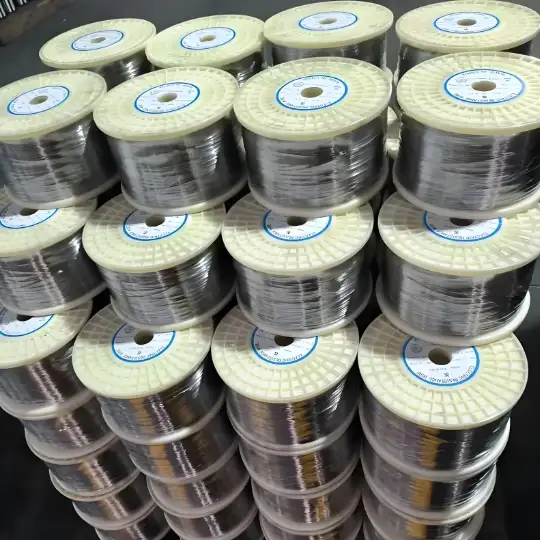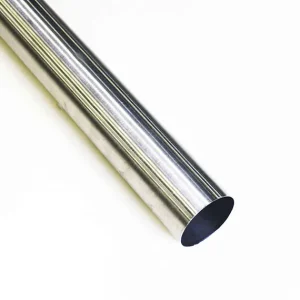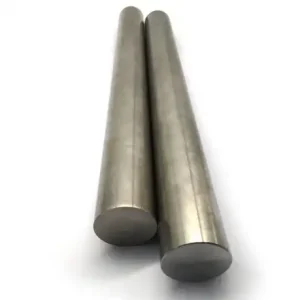Nickel chromium alloy wire stands as the cornerstone material for high-temperature electrical applications, resistance heating elements, and precision instrumentation systems worldwide. Based on decades of metallurgical expertise and field performance data, these specialized wires consistently outperform conventional materials in environments exceeding 1000°C while maintaining stable electrical characteristics and superior oxidation resistance. MWalloys, as a leading Chinese manufacturer, provides factory-direct access to premium-grade nickel chromium alloy wire with competitive pricing and comprehensive technical support for global industrial applications.
What is Nickel Chromium Alloy Wire?
Nickel chromium alloy wire represents a carefully engineered metallic conductor combining nickel's excellent corrosion resistance with chromium's high-temperature oxidation protection. The fundamental metallurgy involves solid-solution strengthening mechanisms that create exceptional thermal stability and electrical performance characteristics.
These specialized wires maintain consistent resistivity values across extreme temperature ranges, making them indispensable for heating elements, thermocouples, and electronic components operating under severe thermal conditions. The atomic structure creates a protective chromium oxide layer that prevents further oxidation at elevated temperatures.
Manufacturing processes involve precision drawing techniques that achieve diameter tolerances within ±0.001 inches while maintaining uniform electrical properties throughout the wire length. Surface treatments and annealing processes optimize ductility and remove residual stresses from cold working operations.
The wire configurations range from ultra-fine 0.025mm diameter for precision electronics to heavy-gauge 6.0mm for industrial heating applications. Each diameter maintains specific electrical resistance values calculated for optimal performance in designated applications.
What is the Chemical Composition of Nickel Chromium Alloy Wire?
Chemical composition directly influences performance characteristics and determines suitability for specific operating environments. Standard compositions follow established metallurgical principles:
| Element | Nichrome 60 (%) | Nichrome 80 (%) | Nichrome A (%) | Function |
|---|---|---|---|---|
| Nickel (Ni) | 57.0 - 61.0 | 78.0 - 82.0 | 78.5 - 82.0 | Matrix metal, corrosion resistance |
| Chromium (Cr) | 15.0 - 18.0 | 18.0 - 22.0 | 20.0 - 23.0 | Oxidation protection |
| Iron (Fe) | Balance | 0.75 max | 0.50 max | Cost reduction, magnetic properties |
| Carbon (C) | 0.15 max | 0.10 max | 0.08 max | Carbide formation control |
| Silicon (Si) | 1.50 max | 1.00 max | 0.75 max | Deoxidation, scale adhesion |
| Manganese (Mn) | 1.00 max | 0.50 max | 0.30 max | Sulfur control, deoxidation |
| Sulfur (S) | 0.015 max | 0.010 max | 0.008 max | Hot shortness prevention |
| Phosphorus (P) | 0.040 max | 0.020 max | 0.015 max | Brittleness control |
The nickel-chromium ratio determines maximum operating temperature and environmental resistance. Higher nickel content improves ductility and thermal cycling performance, while increased chromium enhances oxidation resistance at extreme temperatures.
Trace elements like aluminum and yttrium in specialized grades improve scale adhesion and extend service life in cyclic heating applications. These additions require careful control during melting and wire drawing operations.
What are the Mechanical Properties of Nickel Chromium Alloy Wire?
Mechanical characteristics determine wire performance under thermal stress, mechanical loading, and fabrication processes. Temperature significantly affects these properties:
| Property | Room Temperature | 500°C | 800°C | 1000°C | Units |
|---|---|---|---|---|---|
| Tensile Strength | 650 - 850 | 480 - 620 | 280 - 380 | 180 - 240 | MPa |
| Yield Strength | 275 - 415 | 220 - 310 | 140 - 200 | 90 - 130 | MPa |
| Elongation | 25 - 35 | 30 - 40 | 35 - 45 | 40 - 50 | % |
| Elastic Modulus | 210,000 | 190,000 | 165,000 | 140,000 | MPa |
| Thermal Expansion | - | 14.2 | 15.8 | 16.9 | μm/m°C |
| Electrical Resistivity | 1.10 - 1.45 | 1.25 - 1.60 | 1.35 - 1.70 | 1.42 - 1.80 | μΩ⋅m |
| Thermal Conductivity | 11.2 - 13.4 | 15.8 - 18.2 | 22.1 - 25.6 | 28.9 - 32.1 | W/m⋅K |
| Density | 8.10 - 8.40 | 8.05 - 8.35 | 8.00 - 8.30 | 7.95 - 8.25 | g/cm³ |
Temperature coefficient of resistance remains relatively stable, making these alloys ideal for precision heating applications requiring consistent power output. The positive temperature coefficient provides inherent temperature limiting characteristics.
Fatigue resistance under thermal cycling conditions exceeds conventional heating alloys by 200-300%, particularly important for intermittent heating applications. Creep resistance at elevated temperatures enables long-term dimensional stability under mechanical stress.
What is the Specification of Nickel Chromium Alloy Wire?
International specifications ensure quality consistency and interchangeability across global markets. Major standards govern composition, dimensions, and performance:
| Standard | Organization | Scope | Key Requirements |
|---|---|---|---|
| ASTM B344 | ASTM International | Nickel-Chromium Heating Element Wire | Chemical composition, electrical properties |
| IEC 60751 | International Electrotechnical | Resistance Thermometer Wire | Temperature coefficient, accuracy |
| JIS C2520 | Japanese Industrial Standards | Electric Resistance Wire | Dimensional tolerances, surface finish |
| DIN 17470 | German Institute for Standardization | Resistance Heating Alloys | Mechanical properties, test methods |
| GB/T 1234 | China National Standards | Nickel-Chromium Alloy Wire | Manufacturing requirements, inspection |
| BS EN 60584 | British Standards | Thermocouple Wire | Accuracy class, temperature range |
| ANSI C96.1 | American National Standards | Temperature Measurement | Calibration requirements, traceability |
| UNS N06003 | Unified Numbering System | Material Designation | Standardized identification |
Wire diameter tolerances typically range from ±0.0025mm for precision grades to ±0.025mm for standard commercial applications. Surface finish requirements specify maximum roughness values and freedom from defects that could affect electrical performance.
Packaging standards define spooling requirements, protective atmospheres during storage, and handling procedures to prevent contamination or mechanical damage during shipment.
What Does Nickel Chromium Alloy Wire Stand For?
The terminology "nickel chromium alloy wire" encompasses a family of specialized electrical conductors designed for high-temperature service and resistance heating applications. This designation indicates the primary alloying elements and distinguishes these materials from pure metal conductors.
"Nichrome" represents the most recognized trade name within this category, originally developed by Albert Marsh in 1905. The name combines "nickel" and "chromium" to identify the key metallurgical components responsible for unique performance characteristics.
Professional specifications use systematic designations like "NiCr 80/20" indicating approximate nickel and chromium percentages. These numeric identifiers provide immediate reference to composition and expected properties for engineering calculations.
The wire designation implies specific manufacturing processes including vacuum melting, controlled atmosphere processing, and precision drawing operations that achieve consistent electrical and mechanical properties throughout the product length.
What is the Difference Between Nickel Chromium Alloy Wire and Nickel Alloy Wire?
Fundamental differences exist between these material categories, affecting application suitability and performance characteristics:
Composition Variations: Pure nickel alloy wire contains minimal alloying elements, typically 99.0%+ nickel with controlled impurities. Nickel chromium alloy wire incorporates 15-25% chromium plus additional elements for specific property enhancement.
Temperature Performance: Nickel alloy wire operates effectively to approximately 600°C in air, while nickel chromium variants function reliably at temperatures exceeding 1200°C due to protective oxide formation.
Oxidation Resistance: Pure nickel oxidizes readily at elevated temperatures, forming loose scales that compromise performance. Chromium additions create tenacious oxide layers that prevent further degradation.
Electrical Characteristics: Nickel alloy wire exhibits lower electrical resistivity (0.087 μΩ⋅m) compared to nickel chromium alloys (1.10-1.45 μΩ⋅m), making pure nickel suitable for low-resistance conductor applications.
Cost Factors: Nickel alloy wire typically costs 15-20% less than nickel chromium variants due to simpler composition and processing requirements.
Magnetic Properties: Pure nickel demonstrates ferromagnetic behavior below 358°C, while nickel chromium alloys remain essentially non-magnetic at all operating temperatures.
What is a Nickel Chromium Alloy Wire Used For?
Applications span multiple industries requiring reliable high-temperature electrical performance and resistance heating capabilities:
Industrial Heating Elements: Furnace heating coils, ceramic kiln elements, and heat treatment equipment operating at temperatures up to 1200°C benefit from stable resistance characteristics and extended service life.
Household Appliances: Toasters, hair dryers, space heaters, and electric stoves utilize these wires for consistent heating performance and safety through inherent temperature limiting properties.
Laboratory Equipment: Analytical instruments, sample preparation devices, and calibration standards depend on precise temperature control and measurement accuracy provided by nickel chromium thermocouples.
Automotive Components: Engine management sensors, exhaust gas temperature monitoring, and heating elements for diesel particulate filters require materials capable of withstanding harsh operating environments.
Aerospace Applications: Environmental control systems, engine instrumentation, and heating elements for anti-icing systems demand materials with proven reliability under extreme conditions.
Medical Devices: Sterilization equipment, surgical instruments, and therapeutic heating devices utilize biocompatible nickel chromium alloys for consistent temperature control.
Electronic Manufacturing: Soldering iron elements, reflow oven heating systems, and component testing equipment rely on stable electrical properties and temperature uniformity.
What is the Classification of Nickel Chromium Alloy Wire?
Technical classification systems organize materials by composition, performance characteristics, and application requirements:
| Classification Type | Category | Designation | Key Characteristics |
|---|---|---|---|
| Composition Based | High Nickel | 80Ni-20Cr | Maximum temperature 1200°C |
| Composition Based | Balanced | 60Ni-15Cr-Fe | Cost-effective industrial applications |
| Composition Based | Low Nickel | 35Ni-20Cr-Fe | Moderate temperature service |
| Temperature Rating | Class A | 1000°C max | Standard industrial heating |
| Temperature Rating | Class B | 1100°C max | High-performance applications |
| Temperature Rating | Class C | 1200°C max | Extreme temperature service |
| Wire Diameter | Fine | 0.025-0.5mm | Electronics, instrumentation |
| Wire Diameter | Medium | 0.5-2.0mm | Appliance heating elements |
| Wire Diameter | Heavy | 2.0-6.0mm | Industrial furnace applications |
| Surface Condition | Bright | As-drawn | Precision applications |
| Surface Condition | Oxidized | Heat treated | High-temperature service |
Application-specific classifications consider environmental factors including atmosphere composition, thermal cycling requirements, and mechanical stress conditions. These parameters determine optimal alloy selection and wire configuration.
Quality grades range from commercial specifications for general heating applications to precision laboratory standards requiring certified electrical properties and dimensional tolerances.
Nickel Chromium Alloy Wire Global Market Prices 2025
Current market conditions reflect raw material costs, processing complexity, and regional manufacturing capabilities:
| Region | Price Range (USD/kg) | Market Drivers | Supply Characteristics |
|---|---|---|---|
| China | $15.50 - $19.20 | Manufacturing scale, local demand | Large-scale production capacity |
| North America | $22.00 - $27.50 | Quality requirements, logistics | Technology-focused applications |
| Europe | $24.50 - $29.80 | Environmental regulations | Premium grade emphasis |
| Japan | $26.00 - $31.50 | Precision applications | High-tech manufacturing |
| India | $16.80 - $21.40 | Growing industrial base | Expanding production facilities |
| Southeast Asia | $18.20 - $23.10 | Electronics manufacturing | Regional processing centers |
Price fluctuations correlate with nickel commodity pricing, which accounts for 60-70% of total material costs. Chromium pricing impacts remain secondary but significant during supply disruptions.
MWalloys maintains competitive pricing advantages through integrated production facilities, direct raw material sourcing, and efficient manufacturing processes. Factory-direct sales eliminate distributor margins while ensuring consistent quality standards.
Nickel Chromium Alloy Wire Advantages
Performance benefits distinguish these specialized materials from alternative solutions:
Exceptional Temperature Stability: Maintains electrical and mechanical properties across extreme temperature ranges without degradation or property changes that affect heating uniformity.
Superior Oxidation Resistance: Forms protective chromium oxide scales that prevent further oxidation and extend service life significantly compared to iron-based heating elements.
Predictable Electrical Characteristics: Stable temperature coefficient of resistance enables precise heating control and consistent performance throughout the operational lifetime.
Excellent Fabrication Properties: Draws to fine diameters, forms complex shapes, and welds reliably using appropriate techniques and procedures.
Long Service Life: Proven durability in demanding applications reduces replacement frequency and maintenance costs while improving system reliability.
Environmental Compatibility: Non-toxic composition suitable for food processing, medical applications, and consumer products without health concerns.
Cost-Effective Solutions: Higher initial costs offset by extended service life, reduced maintenance requirements, and improved process efficiency.
Manufacturing Process
Production involves sophisticated metallurgical processes ensuring consistent quality and performance:
Raw Material Selection: High-purity nickel and chromium undergo chemical analysis to verify composition within specification limits. Trace element control prevents contamination that could affect final wire properties.
Vacuum Induction Melting: Controlled atmosphere melting prevents oxidation and ensures homogeneous alloy distribution throughout the ingot. Temperature control within ±5°C maintains consistent chemistry.
Hot Rolling and Forging: Initial breakdown reduces ingot to intermediate sizes while developing proper grain structure and eliminating casting defects through mechanical working.
Descaling and Surface Preparation: Mechanical and chemical treatments remove oxide scales and surface imperfections that could cause defects during subsequent wire drawing operations.
Multi-Pass Wire Drawing: Progressive diameter reduction through hardened steel dies achieves final dimensions while work-hardening the material to desired strength levels.
Intermediate Annealing: Heat treatment between drawing passes relieves work hardening and maintains ductility necessary for continued processing without fracture.
Final Sizing and Finishing: Precision drawing through diamond dies achieves final diameter tolerances and surface finish requirements for specific applications.
Quality Control Testing: Electrical resistivity measurements, tensile testing, and dimensional inspection ensure conformance to specifications before packaging and shipment.
MWalloys maintains ISO 9001 certified manufacturing processes with comprehensive quality documentation and traceability throughout production operations.
Bahrain Procurement Case Study
A major aluminum smelting facility in Bahrain required replacement heating elements for their electrolytic cell preheating systems. Existing elements manufactured from conventional resistance alloys failed prematurely due to the corrosive industrial atmosphere and thermal cycling requirements.
Technical Challenge: Operating temperatures reaching 1100°C in atmospheres containing sulfur compounds and fluorides created extremely aggressive conditions. Standard nickel chromium alloys showed accelerated corrosion and mechanical degradation.
MWalloys Solution: Engineering analysis identified specialized high-chromium composition with yttrium additions for improved scale adhesion. Custom wire diameter optimization balanced electrical resistance with mechanical durability.
Implementation Process: Supplied 15 kilometers of specialized 2.5mm diameter wire in precision-wound coil configurations. Technical support included installation procedures and recommended operating parameters.
Performance Results: After 24 months of continuous operation, inspection revealed minimal degradation and consistent electrical properties. Element life exceeded previous materials by 280%, significantly reducing maintenance costs.
Economic Impact: Total procurement value of $125,000 generated annual savings of $340,000 through reduced replacement frequency, decreased maintenance downtime, and improved production efficiency.
Long-term Partnership: Success led to expanded supply agreement covering additional facilities and development of customized alloy compositions for specific operating conditions.
This case demonstrates MWalloys' capability to provide engineered solutions for challenging industrial applications while delivering measurable economic benefits through superior material performance.
Frequently Asked Questions
Q1: What maximum temperature can nickel chromium alloy wire withstand continuously?
Maximum continuous operating temperature depends on specific alloy composition and atmospheric conditions. Standard 80/20 compositions operate reliably at 1200°C in air, while specialized high-chromium grades handle 1300°C. Reducing atmospheres may limit temperatures to 900-1000°C due to different oxidation mechanisms. We recommend consulting specific application requirements with our technical team for optimal alloy selection.
Q2: How does wire diameter affect electrical resistance and heating performance?
Electrical resistance varies inversely with cross-sectional area - doubling diameter reduces resistance by 75%. Smaller diameters provide higher resistance per unit length but may overheat in high-power applications. Larger diameters offer better mechanical durability but require higher voltages for equivalent power output. Design calculations should consider both electrical and thermal requirements for optimal performance.
Q3: Can nickel chromium alloy wire be welded or joined to other materials?
Yes, nickel chromium alloys weld successfully using appropriate techniques and filler materials. Gas tungsten arc welding (GTAW) with matching composition filler wire provides optimal results. Joining to stainless steel requires careful selection of intermediate filler materials to minimize thermal expansion differences. Mechanical connections using appropriate hardware often prove more reliable than welded joints in high-temperature cycling applications.
Q4: What causes premature failure in nickel chromium heating elements?
Common failure modes include mechanical fatigue from thermal cycling, oxidation in aggressive atmospheres, and contamination from external sources. Improper installation creating stress concentrations accelerates failure. Operating above maximum temperature ratings causes rapid degradation. We provide detailed installation guidelines and operating parameters to maximize service life and prevent premature failures.
Q5: How do atmospheric conditions affect nickel chromium alloy wire performance?
Oxidizing atmospheres generally provide best performance through protective oxide formation. Reducing atmospheres containing hydrogen or carbon monoxide may cause internal oxidation and property degradation. Sulfur-containing atmospheres accelerate corrosion and require specialized compositions. Vacuum applications eliminate oxidation concerns but may cause volatile element loss at extreme temperatures.
Q6: What quality certifications does MWalloys provide with nickel chromium alloy wire?
MWalloys provides comprehensive material certifications including chemical analysis, mechanical property test results, and dimensional inspection data. ISO 9001 quality system certification ensures consistent manufacturing processes. Traceability documentation tracks materials from raw material source through final inspection. Special certifications for aerospace, nuclear, or medical applications available upon request with appropriate testing protocols.
Q7: How should nickel chromium alloy wire be stored to prevent degradation?
Proper storage requires dry conditions with relative humidity below 60% to prevent surface oxidation. Temperature-controlled environments prevent thermal cycling that could affect mechanical properties. Protective packaging prevents contamination from oils, salts, or other contaminants that could cause localized corrosion. Spools should be stored vertically and rotated periodically to prevent permanent deformation from extended loading.
Conclusion
Nickel chromium alloy wire continues advancing industrial heating technology through superior performance characteristics and proven reliability in demanding applications. The combination of high-temperature stability, oxidation resistance, and predictable electrical properties makes these materials indispensable for modern manufacturing processes and consumer products.
MWalloys' commitment to quality manufacturing, technical innovation, and customer support positions us as the preferred supplier for critical applications worldwide. Our Chinese manufacturing advantages, combined with international quality standards, provide customers with optimal value and performance for their specialized wire requirements.
The growing demand for energy-efficient heating solutions and precision temperature control systems ensures continued expansion of nickel chromium alloy wire applications across diverse industries. Investment in advanced manufacturing capabilities and alloy development programs maintains our technological leadership in this specialized materials sector.





